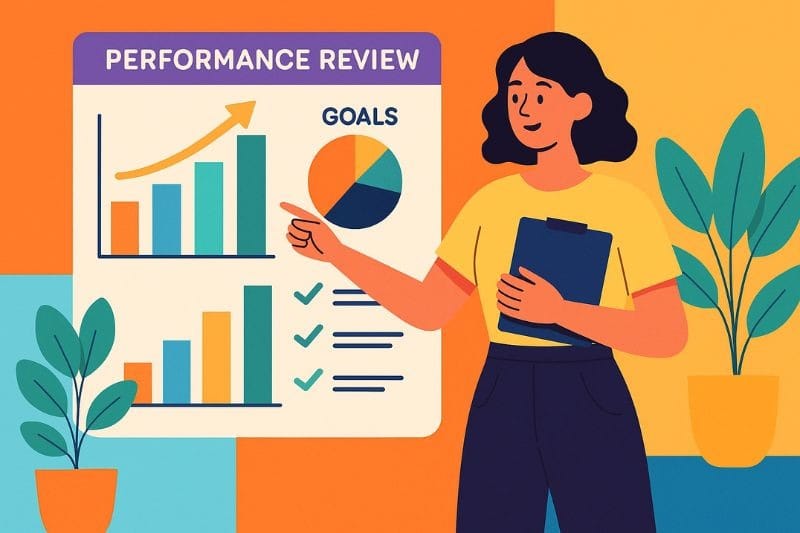Employee onboarding checklist: Everything you need to welcome new hires
Discover why an employee onboarding checklist matters, and how to design a comprehensive 90-day onboarding template. Create onboarding workflows with BuddiesHR.

The first days of a new hire’s journey say a lot about your company. Businesses with thoughtful, well-structured onboarding checklists consistently enjoy higher retention and happier employees.
When people choose to stay, it’s a sign you’ve created a place worth being a part of. A simple checklist can help make that happen. Let’s explore what goes into creating one that reflects a culture you’re proud of.

Quick Overview
An employee onboarding checklist provides a structured and reproducible process for integrating employees into an organization. It includes pre-boarding tasks, first-day activities, a first-week check-in, and 30-, 60-, and 90-day milestones to support complete immersion in company culture.
Table of Contents
- Why a new employee onboarding checklist really matters
- Pre-onboarding checklist
- First day employee onboarding template
- First week checklist
- 30-60-90 day checklist
- Who should take responsibility for employee onboarding?
- Conclusion
- FAQs: Employee onboarding checklist
Why a new employee onboarding checklist really matters
One article shows the effect of an incomplete onboarding plan. A worker recounts how she felt about her new company after a whirlwind three-day orientation program, only to find zero connection the minute she got to the office. After three weeks of frustration and working everything out for herself, she felt disconnected. The effect: She resigned nine months later.
The onboarding program got off to a great start, but fell apart immediately when there was no structured onboarding process. Unfortunately, this story is all too familiar in US workplaces, with 70% of new hires leaving within one month.1 When psychological safety is compromised early on, it sends a message that ‘we don’t really care about you’. This is devastating for retention.2
You can prevent a similar scenario from playing out in your workplace by designing a new hire onboarding process that really speaks for itself.
Ready to streamline your process?
👉 Build onboarding workflows in minutes with BuddiesHR.
An effective employee onboarding process checklist
1. The pre-onboarding checklist

New hire orientation begins when the offer of employment is accepted. Hiring managers or HR professionals should initiate this phase of the new hire checklist almost immediately after the offer has been signed.
2. First day employee onboarding template

For most companies, this represents the first day on the job (sometimes this can be after a short orientation program). It is an important step into the workplace culture, positively impacting the employee experience.
3. First week checklist

Monitoring a new hire’s progress and comfort during the first week goes a long way towards their decision to stay with your company. Once all the necessary paperwork is concluded, technology is up and running, and team introductions are done, it’s time to work.
4. 30-60-90 day checklist

A positive onboarding experience continues long after the first week. A current best practice in the area of onboarding is a milestone-focused 30-60-90-day onboarding program.
Want to connect onboarding with performance?
👉 Try Simpleperf inside BuddiesHR to support new hires through their first 90 days and beyond.

Who should take responsibility for employee onboarding?

The responsibility for onboarding should fall in the hands of People Ops (HR), the management team, and senior employees who act as onboarding mentors or buddies.
People Ops (HR)
The role of People Ops in the onboarding checklist is primarily at the start of the process. The HR team is likely responsible for the recruitment of new hires, and therefore has direct access to candidate details. Ideally, People Ops should send out all pre-onboarding documentation and welcome packs.
Management team
Management steps in to join People Ops on day 1 of onboarding. This joint effort is to educate the new hire on the company and also introduce them to their individual team or department. Direct superiors should have short welcome meetings and discuss job descriptions and performance expectations with the employee. This partnership between People Ops and management continues throughout the 90-day duration of the onboarding program, giving all-around support to the employee.
Onboarding mentor or buddy
An onboarding mentor or buddy should be a more senior employee who has successfully navigated others through the onboarding process. They lend company culture, social, and development support to the employee. The mentor or buddy’s role ends when the employee is fully integrated into the company.
Conclusion
Successful employee onboarding is not only a novel idea, but it is also the cornerstone of employee integration into your company. It increases the satisfaction of the employee and allows organizations to measure integration practices.
An onboarding checklist provides a structured template that can be replicated by different departments or teams, ensuring consistency in onboarding. When employees know they are going through a structured process that is focused on integrating them into the company culture and achieving the goals, they feel valued and appreciated. This cuts down staff turnover in the first 90 days, which can be costly for companies.
Reduce staff turnover costs by improving your onboarding practices.
One simple way of doing this is by adding apps like BuddiesHR to your communication platform (Slack). The value of these apps is that they turn onboarding into an everyday fun activity, naturally bringing employees further into the culture and helping them feel at home. 👉 Begin the onboarding process.

FAQs: Employee onboarding
1. What should be included in an employee onboarding checklist?
A comprehensive onboarding checklist should cover the following activities: Pre-boarding documentation and welcome, day 1 orientation, a training plan, performance criteria, performance review, and a structured 90-day work plan.
2. What are the 5 stages of the onboarding process?
The five stages of onboarding are generally described as pre-boarding, orientation, training, integration, and ongoing development. A framework developed by Dr. Talya Bauer should be included in the process, namely: compliance, clarification, culture, connection, and check-back. This framework ensures a successful onboarding process.
3. What are the 30-60-90 day check-in questions for new hires?
30-60-90 day check-in questions cover the new hire’s experiences, expectations, challenges, goal development, and culture-fit. Specific questions should be developed at each stage. At 30 days, focus on experience and integration, at 60 days, ask about skills and goal achievement,and at 90 days, direct questions towards the level of satisfaction with the organization.
4. What is the difference between orientation and onboarding?
Orientation is a once-off introduction to the company, its policies, and its processes. This is usually done on day 1. Onboarding is a structured process of integration that begins with pre-boarding and commonly ends 90 days after the start of employment. Orientation is therefore just one step in the onboarding process.

References:




